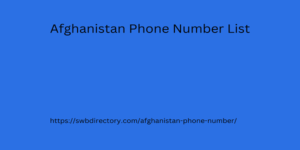Post by samiul114111 on Sept 11, 2024 4:19:08 GMT
Using lead to block cell phone radiation involves a consideration of its pros and cons, given lead’s established role in radiation shielding and the nature of cell phone emissions. Here’s a detailed look at the advantages and disadvantages of using lead for this purpose.
Pros
Effective Against Ionizing Radiation: Lead is renowned for its effectiveness in blocking ionizing radiation, such as X-rays and gamma rays. Its dense atomic structure allows it to absorb and deflect high-energy particles, making it Afghanistan Phone Number List an excellent shield in environments with high levels of ionizing radiation. This established efficacy suggests that lead could theoretically block some degree of non-ionizing radiation as well.
Historical Use in Shielding: Lead has a long history of being used as a radiation shield in medical and industrial applications. This historical precedent underscores its reliability and effectiveness in specific contexts, providing a baseline for understanding its potential in other shielding applications.

Cons
Ineffectiveness Against Non-Ionizing Radiation: Cell phones emit radiofrequency (RF) radiation, a form of non-ionizing electromagnetic radiation. Unlike ionizing radiation, RF radiation does not have enough energy to ionize atoms or damage DNA directly. Lead is not particularly effective at blocking non-ionizing radiation compared to other materials. Metals like copper and aluminum are more efficient for this purpose, as they are better suited to interact with and reflect RF waves.
Health Risks: Lead is a toxic substance with well-documented health risks. Prolonged exposure to lead can lead to severe health issues, including neurological damage, kidney problems, and developmental delays, especially in children. The risks associated with lead poisoning make it an unsuitable choice for consumer products that come into regular contact with the human body, such as cell phones.
Practicality and Usability: Lead is heavy and difficult to work with, making it impractical for everyday use in consumer products. Incorporating lead into phone cases or other shielding devices would result in bulky and cumbersome products. Additionally, the handling and manufacturing processes involving lead require strict safety measures to avoid contamination and exposure.
Environmental Concerns: The use of lead poses environmental risks due to its toxicity. Lead contamination can have detrimental effects on ecosystems and wildlife. The disposal and recycling of lead-containing products also require careful management to prevent environmental damage.
Conclusion
While lead is highly effective at blocking ionizing radiation, it is not a practical or safe material for blocking cell phone RF radiation. The disadvantages, including its limited effectiveness against non-ionizing radiation, health risks, and practical challenges, outweigh any potential benefits. Safer and more effective materials, such as copper and aluminum, provide better protection without the associated risks of lead, making them more suitable for shielding against cell phone radiation.
Pros
Effective Against Ionizing Radiation: Lead is renowned for its effectiveness in blocking ionizing radiation, such as X-rays and gamma rays. Its dense atomic structure allows it to absorb and deflect high-energy particles, making it Afghanistan Phone Number List an excellent shield in environments with high levels of ionizing radiation. This established efficacy suggests that lead could theoretically block some degree of non-ionizing radiation as well.
Historical Use in Shielding: Lead has a long history of being used as a radiation shield in medical and industrial applications. This historical precedent underscores its reliability and effectiveness in specific contexts, providing a baseline for understanding its potential in other shielding applications.

Cons
Ineffectiveness Against Non-Ionizing Radiation: Cell phones emit radiofrequency (RF) radiation, a form of non-ionizing electromagnetic radiation. Unlike ionizing radiation, RF radiation does not have enough energy to ionize atoms or damage DNA directly. Lead is not particularly effective at blocking non-ionizing radiation compared to other materials. Metals like copper and aluminum are more efficient for this purpose, as they are better suited to interact with and reflect RF waves.
Health Risks: Lead is a toxic substance with well-documented health risks. Prolonged exposure to lead can lead to severe health issues, including neurological damage, kidney problems, and developmental delays, especially in children. The risks associated with lead poisoning make it an unsuitable choice for consumer products that come into regular contact with the human body, such as cell phones.
Practicality and Usability: Lead is heavy and difficult to work with, making it impractical for everyday use in consumer products. Incorporating lead into phone cases or other shielding devices would result in bulky and cumbersome products. Additionally, the handling and manufacturing processes involving lead require strict safety measures to avoid contamination and exposure.
Environmental Concerns: The use of lead poses environmental risks due to its toxicity. Lead contamination can have detrimental effects on ecosystems and wildlife. The disposal and recycling of lead-containing products also require careful management to prevent environmental damage.
Conclusion
While lead is highly effective at blocking ionizing radiation, it is not a practical or safe material for blocking cell phone RF radiation. The disadvantages, including its limited effectiveness against non-ionizing radiation, health risks, and practical challenges, outweigh any potential benefits. Safer and more effective materials, such as copper and aluminum, provide better protection without the associated risks of lead, making them more suitable for shielding against cell phone radiation.

